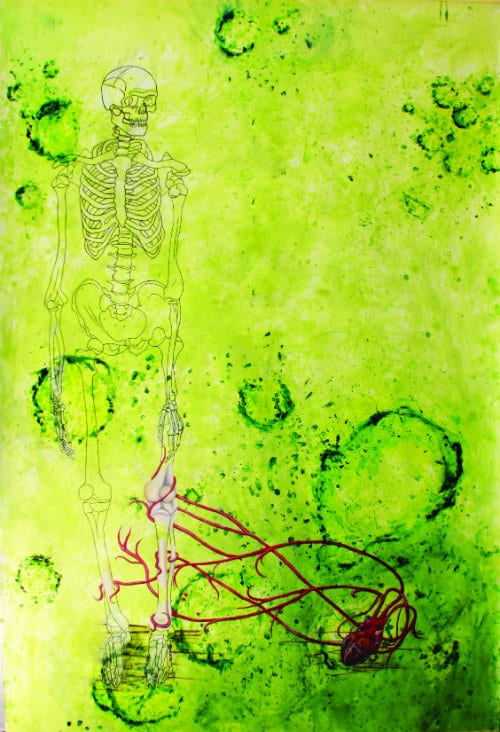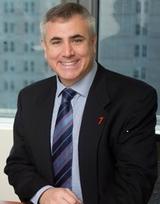By Donald Lloyd-Jones, MD, ScM
I probably first heard about Framingham during our cardiovascular unit in the first year of medical school, but it wasn’t until I was choosing my research project as a second- and third-year cardiology fellow, and was invited out to Framingham to visit the study’s office, that I seriously thought about working there.
On my first day in Framingham, Bill Kannel [the legendary director of the FHS] came into my office, plunked down next to me, and reeled off 10 solid gold projects that he just had never had time to do. He knew the data better than anybody—he had been there forever, and he was brilliant. Literally, my mouth was hanging open as I was listening to these amazing ideas for projects. That’s the kind of place it is. Mentoring and scientific inquiry are of paramount importance. To be exposed to the study as a fellow, with the tremendous strengths of the mentors and the scientists there, as well as an extraordinarily rich data set, was a tremendous experience.
I was really lucky to get in at the front end of the first study to look at lifetime risks for cardiovascular disease. We trailed our cancer epidemiology colleagues—they recognized the power of understanding long-term risk as a messaging tool, and had used it to good effect to motivate breast cancer screening. But Framingham was one of only a handful of places that could look at this. The combination of long-term data and perspective with novel methodology is a theme that runs throughout Framingham’s history.
The study is an amazing environment. For the first 30 years, FHS was headquartered in a house down the street from the local hospital. When I started, the study was housed in a convent building behind the local Catholic high school, where they were for about 20 years. A religious brother still lived there, and you’d bump into him in the hallway sometimes. Now the study is located in a modern office building, but it is still right downtown in Framingham, Massachusetts.
The fellows do the periodic exams of cohort members, so we got to know the participants really well. They are lovely people. The original cohort members still come back. The study started 64 years ago, so many of the members who started in middle age have died. But there were participants as young as 28, so a few original participants are still hanging in there. It turns out they were the ones who maintained their healthy habits!
The original sample was almost a random sample of the residents of Framingham. One thing that’s been misunderstood about Framingham is that, while the population of the town in 1947 was exclusively white and therefore the cohort is racially quite uniform, participants came from all social classes. There were gentleman horse farmers, managerial people, and blue-collar employees from the mills. So it was socioeconomically quite diverse, if not racially.
The people of Framingham had previously participated in and benefitted from a population study of the diagnosis and treatment of tuberculosis in the 1920s, so town officials, Boston doctors, and the local congressman lobbied to have the heart study sited there. About half the people in the town, 5209, were enrolled in the original cohort, including 1644 spouse pairs and members of 596 extended families. The original cohort has been examined every two years since the study began. The follow-up “Offspring Study,” initiated in 1971, included 5124 people; almost 70% were biological offspring of the original cohort. Members of the original and offspring cohort—who often live in places like Arizona and Florida now—continue to travel to Framingham at their own expense for their study-related exams. They have a fierce loyalty to the study and a great understanding about what they have contributed to the world through their participation.
The Gen3 study has 4095 members, grandchildren of the original cohort, and focuses heavily on genomic data collection. When the study was recruiting for Gen3, members of the second cohort called to insist that their children be included, and ultimately the size of the cohort was larger than anticipated because so many people insisted that family members be included. “If you don’t take my children for the Gen3 cohort, I’m going to be angry. Dr. Kannel is my friend, and…”
Framingham was such a good investment. By 2000, there had been more money spent on the Kenneth Starr investigation of Bill Clinton than on the entire history of Framingham. It’s gotten more expensive since then with the addition of the genetic studies, but think of what we’ve learned! Framingham is really the exemplar community-based epidemiologic study, and for good reason. It has transformed our understanding of the origins of cardiovascular disease and many other chronic diseases of aging. In fact, even the term “risk factor” comes from Framingham—it was coined by Bill Kannel in one of the first big Framingham manuscripts. Framingham provided the key data that led to our current understanding of the central roles of cholesterol, smoking, blood pressure, and diabetes in development of CVD. Framingham put HDL on the map, and developed the first equations to estimate absolute cardiovascular risk, which form the basis of our current cardiovascular disease prevention guidelines. Before Framingham, we did not understand how modifiable and preventable CVD could be.
It’s not just a cardiovascular study anymore; that’s why it’s now called the Framingham Study, not just the Framingham Heart study. For example, if you’re a participant, you can donate your brain when you die, which has created rich data on cardiovascular brain disease and dementia. They collect data on bone density, cancer incidence, sleep patterns, environmental exposures, and much more.
I think the Framingham experience really goes to show the power of collaboration between scientists and communities to target priority areas for improving population and individual health. Just think where we would be today if it weren’t for Framingham!
About the Author
As a cardiology fellow at the Massachusetts General Hospital, Donald Lloyd-Jones, MD, ScM started working at the Framingham Heart Study (FHS) and continued as a staff investigator for 6 years. During his tenure, FHS transitioned from the 20th century’s foundational epidemiologic study of cardiovascular disease to the “Framingham Study” of 21st-century chronic disease. Recently, Dr. Lloyd-Jones recorded some of his impressions of working with the study, from the role FHS has played in shaping disease prevention to his experience of the participants. Dr. Lloyd-Jones is currently the chair of Preventive Medicine at Northwestern.
This article was compiled from an interview with Dr. Lloyd-Jones by Dr. Rebecca Wurtz. Dr. Wurtz was the MPH program director at Northwestern University and an Associate Professor in Preventative Medicine. She was previously the deputy medical director of the Illinois Department of Public Health and President of the Chicago Board of Health.
Further Reading
If you are interested in reading more, there is an excellent book, A Change of Heart, by Daniel Levy (the current director of the study) and Susan Brink (New York: Knopf, 2005).


